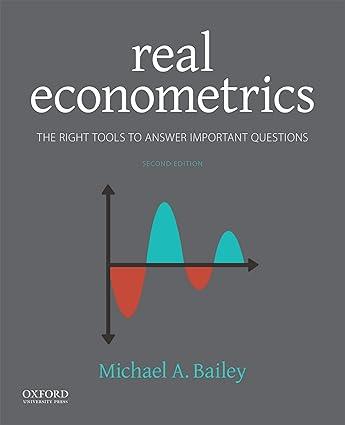In their 2004 paper Are Emily and Greg More Employable than Lakisha and Jamal? A Field Experiment
Question:
In their 2004 paper "Are Emily and Greg More Employable than Lakisha and Jamal? A Field Experiment on Labor Market Discrimination," Marianne Bertrand and Sendhil Mullainathan discuss the results of their field experiment on randomizing names on job resumes. To assess whether employers treated African-American and white applicants similarly, they had created fictitious resumes and randomly assigned white-sounding names (e.g., Emily and Greg) to half of the resumes and African-American-sounding names (e.g., Lakisha and Jamal) to the other half. They sent these resumes in response to helpwanted ads in Chicago and Boston and collected data on the number of callbacks received. Table 10.11 describes the variables in the data set resume_HW.dta.

(a) What would be the concern of looking at the number of callbacks by race from an observational study?
(b) Check balance between the two groups (resumes with AfricanAmerican-sounding names and resumes with white-sounding names) on the following variables: education, years of experience, volunteering experience, honors, computer skills, and gender. The treatment is whether the resume had or did not have an AfricanAmerican sounding name as indicated by the variable afn_american.
(c) What would compliance be in the context of this experiment? Is there a potential non-compliance problem?
(d) What variables do we need in order to use 2SLS to deal with noncompliance?
(e) Calculate the ITT for receiving a callback from the resumes. The variable call is coded 1 if a person received a callback and 0 otherwise. Use OLS with call as the dependent variable.
(f) We're going to add covariates shortly. Discuss the implications of adding covariates to this analysis of a randomized experiment.
(g) Rerun the analysis from part (e) with controls for education, years of experience, volunteering experience, honors, computer skills, and gender. Report the results, and briefly describe the effect of having an African-American-sounding name and if/how the estimated effect changed from the earlier results.
(h) The authors were also interested to see whether race had a differential effect for high-quality resumes and low-quality resumes. They created a variable \(\mathrm{h} \_\)quality that indicated a highquality resume based on labor market experience, career profile, existence of gaps in employment, and skills. Use the controls from part (g) plus the high-quality indicator variable to estimate the effect of having an African-American-sounding name for high- and low-quality resumes.
Step by Step Answer:

Real Econometrics The Right Tools To Answer Important Questions
ISBN: 9780190857462
2nd Edition
Authors: Michael Bailey





